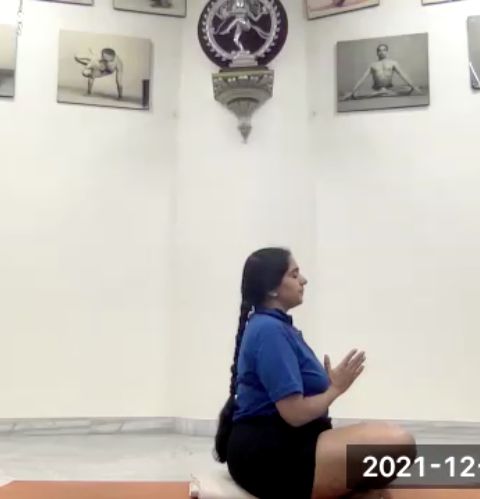Dawn of Wisdom

For our last day with Abhijata, she covered the process and particulars of Pranayama practice (regulation of the breath) – why we do it, when to start it, and how to approach it. She ended the session mentioning the following Yoga Sutra:
Chapter II, Yoga Sutra 28 – By dedicated practice of the various aspects of yoga (all eight limbs) impurities are destroyed: the crown of wisdom radiates in glory.
And though she did not mention it today, the above reminds me of one of the Yoga Sutras that describes Pranayama itself:
Chapter II, Yoga Sutra 52 – Pranayama removes the veil covering the light of knowledge and heralds the dawn of wisdom.
First of all, we must know that prana itself is not the breath, but the Universal energy of life that is carried by the breath. To regulate and manipulate the breath takes the understanding that to work with the prana is a powerful tool and one that needs preparation and proper approach. Even the Yoga Sutras tell us that posture (asana) must be “perfected” before the practice of Pranayama is even begun (II.49). But why?
Our physical state is the first indicator and influencer of how the breath moves – they are a partnership. Without the body there is no breath and visa versa. Collapsed chests and weak spines do not allow for the movement of breath, and to be distracted by physical discomforts already is a veil that covers any ability to develop sensitivity to breath.
The physical state and training then leads toward mental strength and training. Maybe we can sit without discomfort, but where is the mind? Abhijata mentioned that yes, of course if we are looking for an elephant we will see it every time and with not much effort, but to find something small and possibly even camouflaged, we need quiet, focus, and an intense state of discipline. The breath is invisible so we have to train our body and our mind to be sensitive, aware, and attentive to its movement – volume, speed, depth, rhythm, etc…
If our physical and mental state are not conducive for the attention on the breath, then Pranayama is not possible. Even if the environmental factors we are in are not ideal, then Pranayama will also not happen. She took us through certain examples of asanas that would definitely NOT be conducive to Pranayama, but serve some purpose to the build-up of the body toward that end. We also did some restorative postures that are held for longer periods of time with props. It is this use of props that allows time for the chemical aspect of Pranayama to also take effect.
Sequence matters for both the mind and the body in the microcosm and the macrocosm. As the above Sutra II.28 states, it is “the various aspects of yoga”, not just one that moves us toward the “dawn of wisdom”. Before Pranayama in the sequence of the eight limbs (ashtanga) of yoga are the Yamas (moral precepts) and Niyamas (personal observances). To ignore our actions in life or to neglect ourself in all other aspects besides body movement, then we will not find our way to Pranayama. So also, within a sequence of practice, if we do not practice accordingly to lead us toward a quieter and more focused mental state, Pranayama will not happen. As she mentioned in earlier classes this week, this takes honesty and truth and self reflection on what we are actually doing, not just “going through the motions” or just saying what we think we are doing.
The “technology” within the yoga of BKS Iyengar that included the props, the approach to timing and sequencing within postures, and a disciplined approach all around to practice is what will lead us toward a more successful practice of Pranayama and beyond to the other various aspects of yoga – Pratyahara (sense withdrawal), Dharana (mental focus), Dhyana (meditation), and Samadhi (Ultimate Freedom). What a gift that we have been given – touched by this practice and living in a time when the Iyengar Family, so dedicated to this subject, has been so giving in their teaching and approach.